

Actualités
Portal Crane is widely used in ports, shipyards, and large logistics centers. This article will give you an in-depth understanding of the Portal Crane's definition, structural composition, design points, functional features, and the difference with Gantry Crane. If you don't know how to choose the right Portal Crane or want to know its price range and application areas, then this article will be your ideal guide.
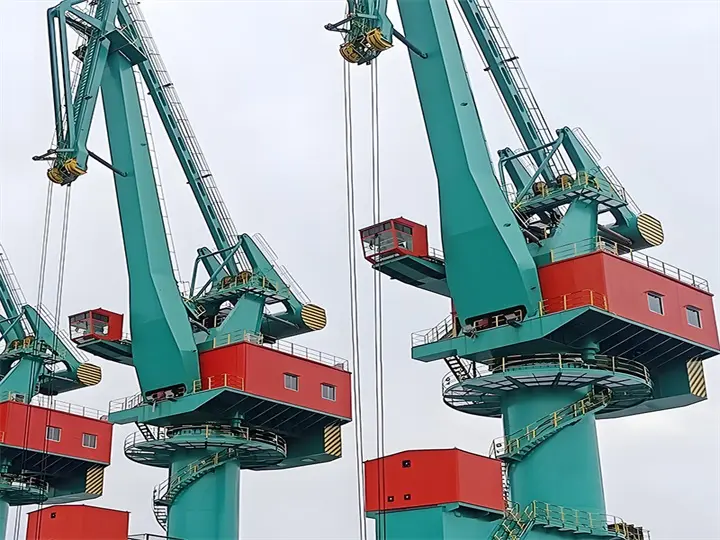
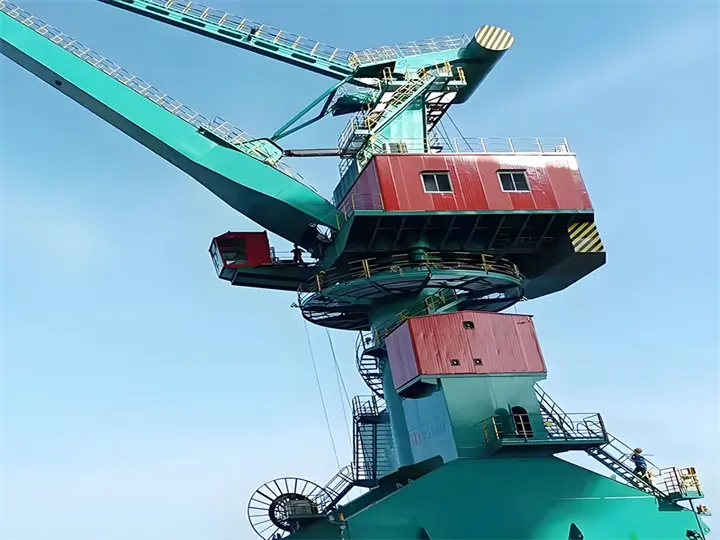
A portal crane is a kind of rail-running crane with a rotating jib structure, which is called a portal slewing crane because its shape is similar to a door frame. Portal cranes can operate efficiently on fixed rails and are widely used in scenes such as the loading and unloading of goods in ports and harbors, ship construction and equipment installation in shipyards, and construction works of large hydropower stations. The portal crane's machine base is its core load-bearing component, and the internal integrated rotating mechanism enables the crane to realize flexible slewing and accurate load positioning during operation.
A portal crane is composed of boom, trolley, hoist, portal frame, runway rails, cab, counterweights, and other parts. The following are the function characteristics of each part:
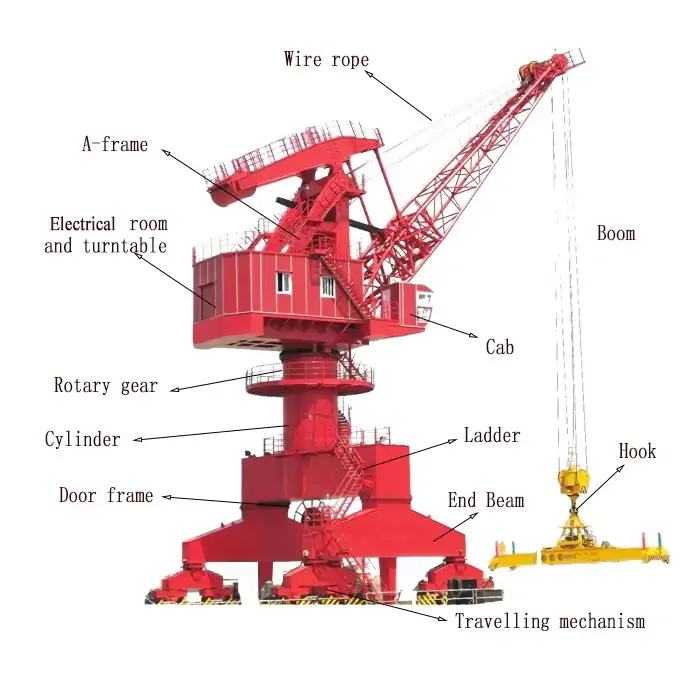
The design of portal cranes needs to consider the working environment, load capacity, operating range, and other factors. Design drawings usually include general layout drawings, mechanical component drawings, and electrical system drawings.

Portal crane specifications and key parameters include:
Paramètres de base | Capacité de levage nominale | Crochet (t) | 10 | 16 | 25 | 40 | 60 | 80 |
| Grab(t) | 10 | 16 | 25 | 40 | 40 | 40 | ||
| Min. Working Range (m) | Au-dessus de la surface du rail (m) | 20 | 25 | 25 | 28 | 30 | 35 | |
| Sous la surface du rail (m) | 10 | 10 | 15 | 15 | 18 | 20 | ||
| Portée de travail maximale (m) | 30 | 35 | 35 | 35 | 40 | 45 | ||
| Plage de travail minimale (m) | 8.5 | 8.5 | 9.5 | 11 | 12 | 12 | ||
| Rayon d'orientation de la queue (m) | 6.5 | 7 | 7.5 | 8 | 9 | 9.5 | ||
| Ecartement des rails (m) | 10.5/12 | 10.5/12 | 10.5/12/14 | 10.5/12/14/16 | 12/14/16 | 12/14/16 | ||
| Distance de la base (m) | 10.5/12 | 10.5/12 | 10.5/12/14 | 10.5/12/14 | 12/14/16 | 12/14/16 | ||
| Vitesse | Vitesse de levage | Pleine charge (m/min) | 40 | 40 | 50 | 50 | 40 | 30 |
| Sans charge (m/min) | 60 | 60 | 80 | 80 | 70 | 50 | ||
| Vitesse de guindage (m/min) | 40 | 40 | 50 | 50 | 30 | 30 | ||
| Vitesse d'orientation (r/min) | 1/1.2/1.5 | 1/1.2/1.5 | 1/1.2/1.5 | 1/1.2/1.5 | 0.8/1 | 0.8/1 | ||
| Vitesse de déplacement de la grue (m/min) | 25/30 | 25/30 | 25/30 | 25/30 | 25/30 | 25/30 | ||
| Nombre de roues | 16/20 | 20/24 | 24/32 | 32 | 32/40 | 40 | ||
| Charge maximale sur les roues | 250 | 250 | 250 | 250 | 300 | 300 | ||
| Type de rail | QU80 | QU80 | QU100 | QU100 | QU100 | QU100 | ||
Customized portal cranes are mainly designed according to the specific needs of the user, such as specific working environment, load requirements and so on. Key parameters for customization include:
| Types | Application | Capacity | La portée | Price Range |
| Fixed Portal Cranes | Ideal for heavy-duty industrial sites | 20-500 tons | 15-50 meters | $50,000 ~ $500,000, depending on specifications |
| Mobile Portal Cranes | Suitable for shipyards and construction sites | |||
| Rail-Mounted Portal Cranes | Perfect for ports and container terminals |

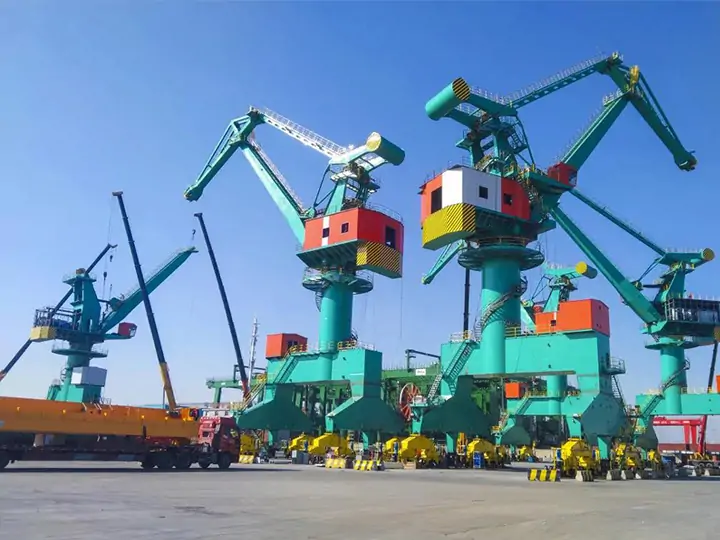
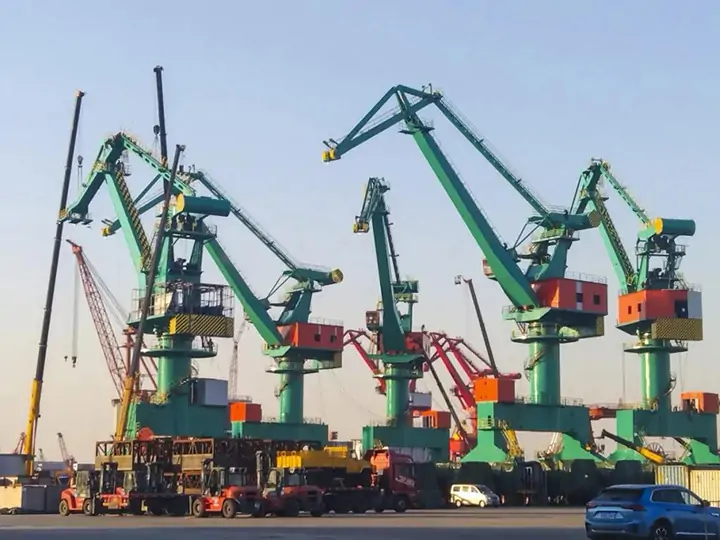
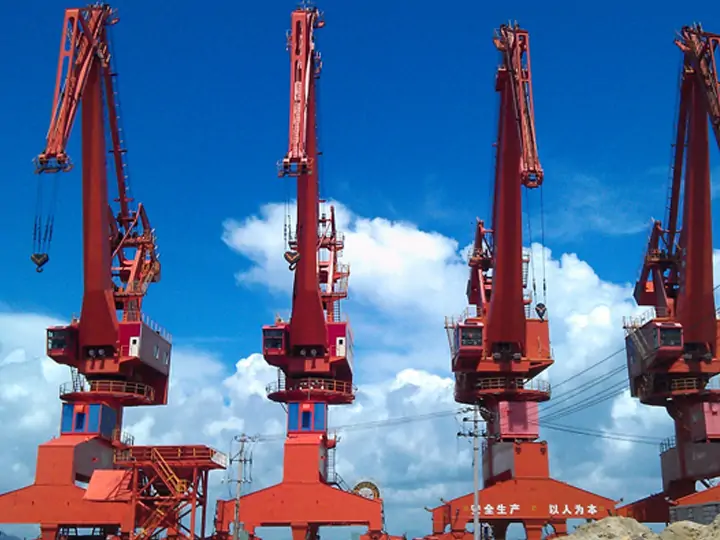
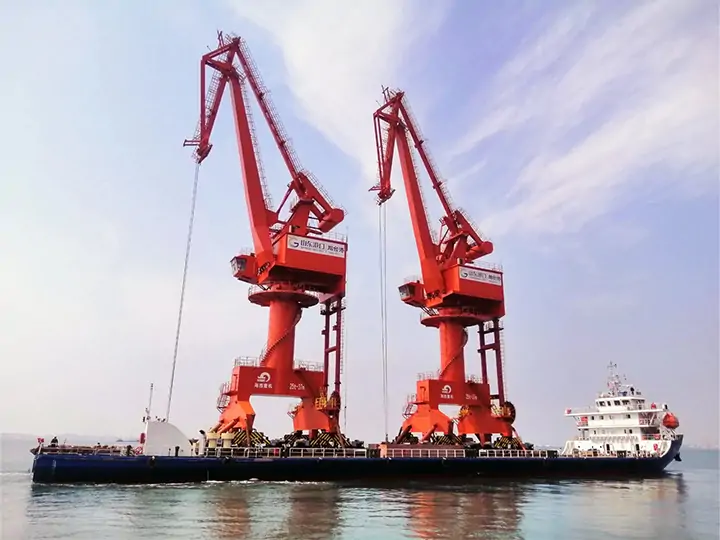
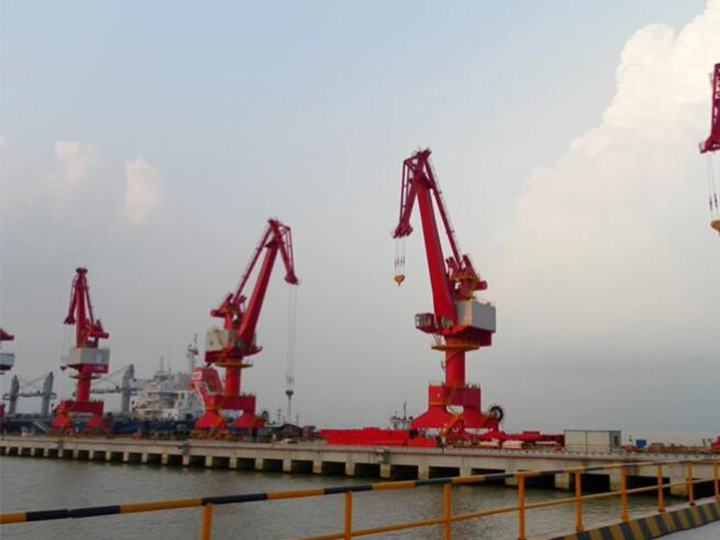
Portal cranes are mainly used for material handling and have a variety of functions to efficiently accomplish the loading, unloading, handling, and stacking of goods.
The main functions of the portal crane include:
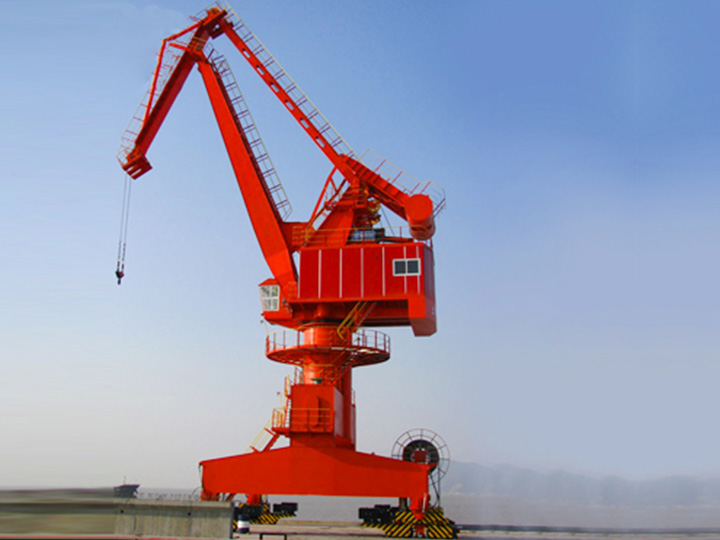
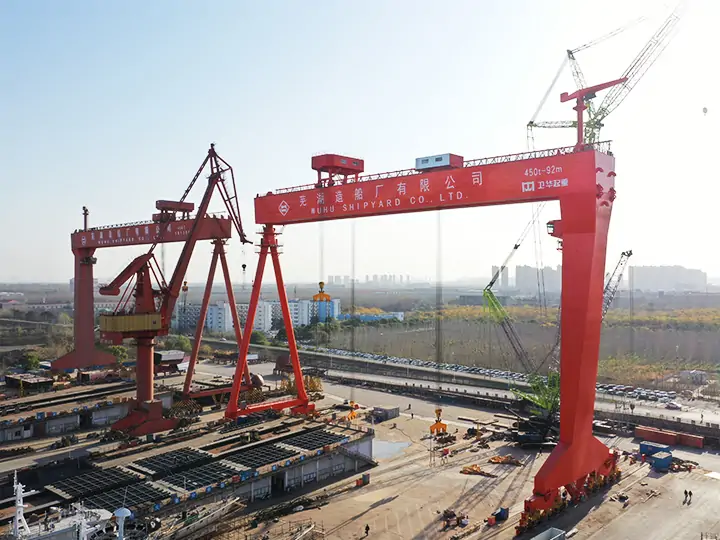
The portal crane adopts a portal frame structure, vertical outriggers run along the track or wheels, and the shape is similar to the “door frame”, suitable for a wide range of heavy operations, load capacity of up to 500 tons or more. They are widely used in ports, shipyards, and large construction projects. Its long jib design and track or wheeled mobility systems make it particularly suitable for outdoor and harsh environments. In contrast, gantry cranes consist of an A-type or rigid outrigger-supported beam structure and typically run on ground tracks or wheels for material handling in limited spaces. With load capacities typically not exceeding 200 tons, they are compact and easy to install and are commonly used in factories, warehouses, and small construction sites.
Portal cranes are designed for large, high-intensity dynamic operations and are suitable for container handling, ship repair, and heavy manufacturing, but they have high initial costs and complex maintenance, especially in harsh environments. While the gantry crane is more suitable for static or repetitive tasks, such as production line assembly and material storage, with low initial cost, simple maintenance, and other advantages, is the economic choice for small operations. There are also significant differences between the two in terms of mobility: gantry cranes offer a wide range of mobility, while gantry cranes focus on fixed-path operations in limited spaces.
The main advantage of a portal crane is its ability to handle heavy loads over large areas with precision and stability. Other benefits include:
Portal cranes typically have a capacity ranging from 10 to 500 tons. Their robust structure and design allow to handle extremely heavy loads, making them ideal for industries like shipping, construction, and heavy manufacturing.
Port Cranes are mainly used for the following industries:
Prices for portal cranes vary based on capacity, span, and features. Below is a general price range:
| Capacity (Tons) | Span (Meters) | Price Range (USD) |
| 20-50 | 15-30 | 50,000−150,000 |
| 50-100 | 30-40 | 150,000−300,000 |
| 100-500 | 40-50 | 300,000−500,000 |
WeiHua, a well-known portal crane manufacturer, has a production base of 3,420,000 square meters since its establishment in 1988, and exports its products to more than 170 countries and regions. We have a team of 1,000 R&D engineers and have been awarded 500 honors. We provide one-stop solutions from customized design, and installation service to technical guidance, and all products enjoy one-year warranty service. Our professional and experienced sales team is committed to providing customers with detailed product information to help them make informed choices.
This article has given you a better understanding of portal cranes. Whether you're looking for a customized solution to fit your needs or wish to learn more about the different types of portal cranes, we hope to provide you with a valuable reference.
If you have any specific requirements or need further assistance, please feel free to contact our team of experts who will provide you with customized solutions and professional support.
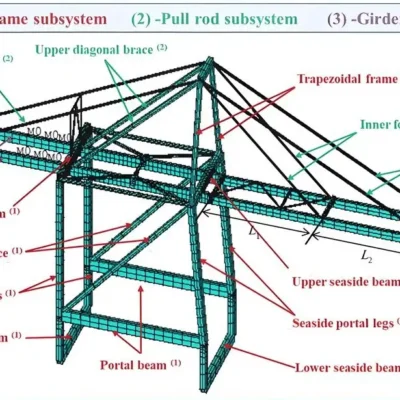
Date :
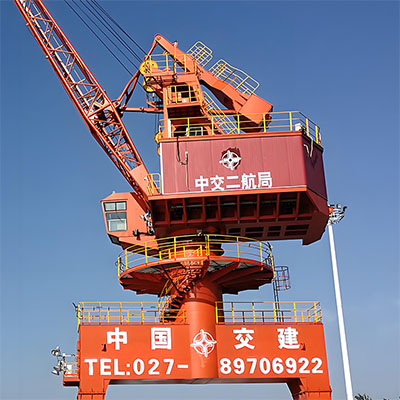

Soumettre une demande